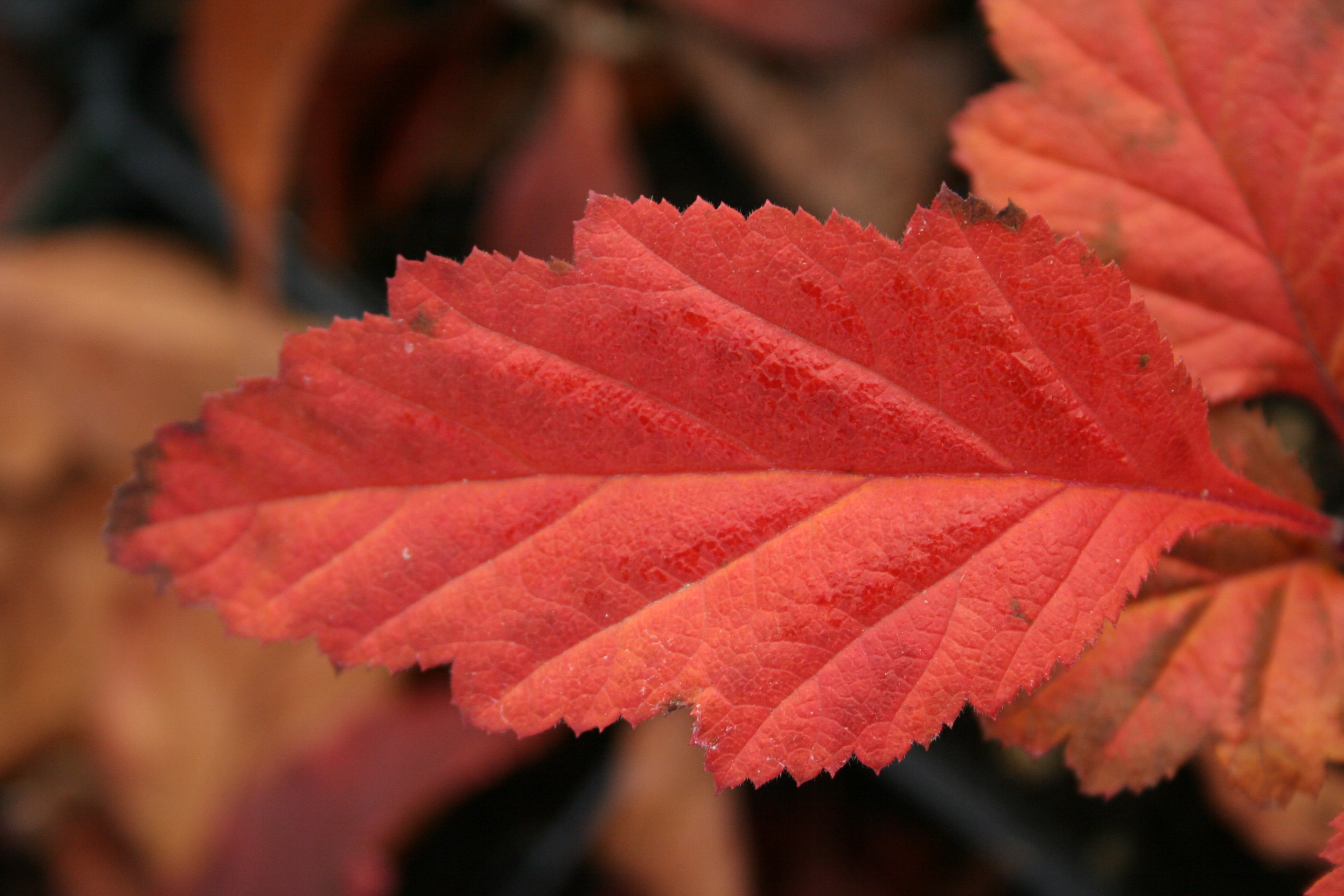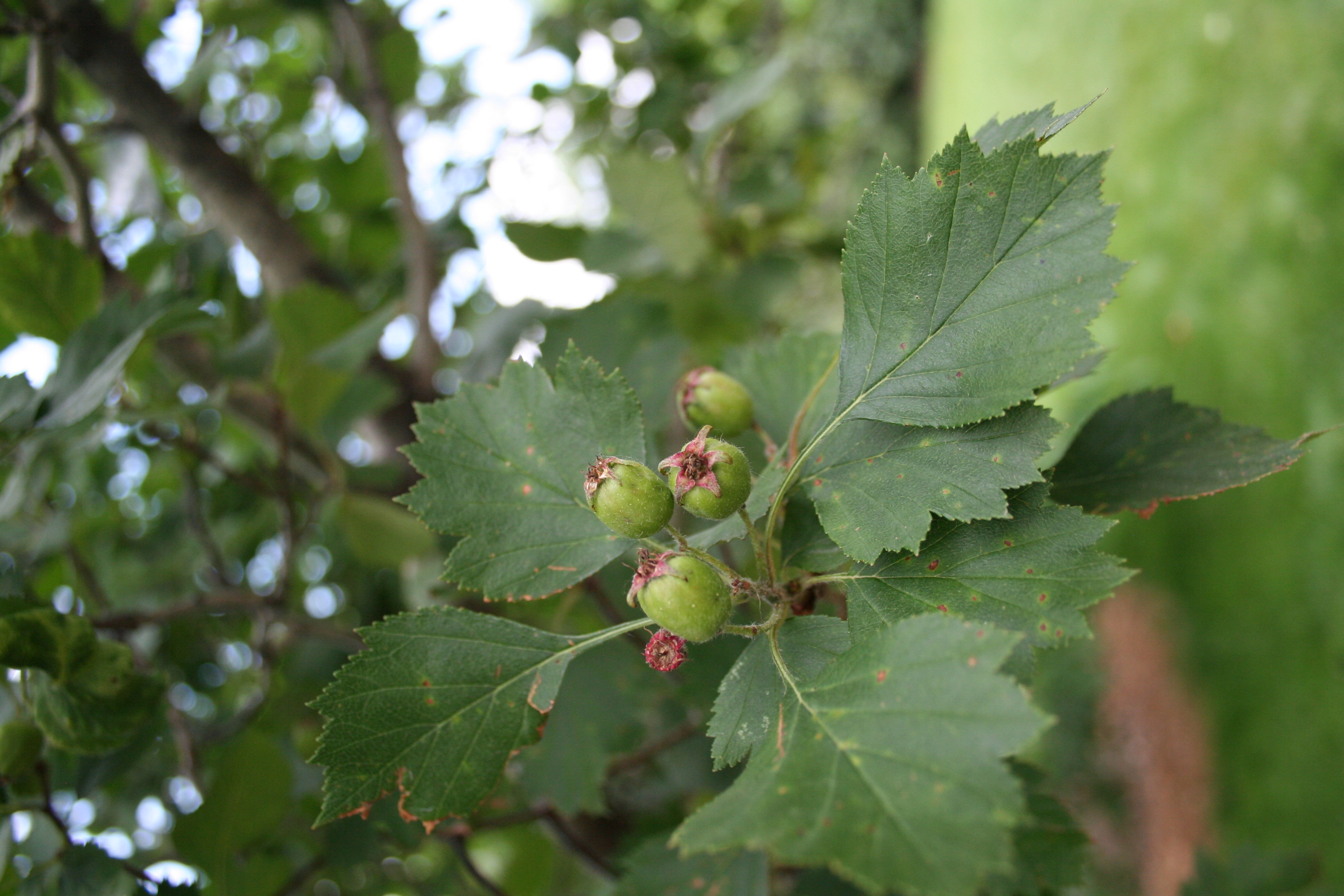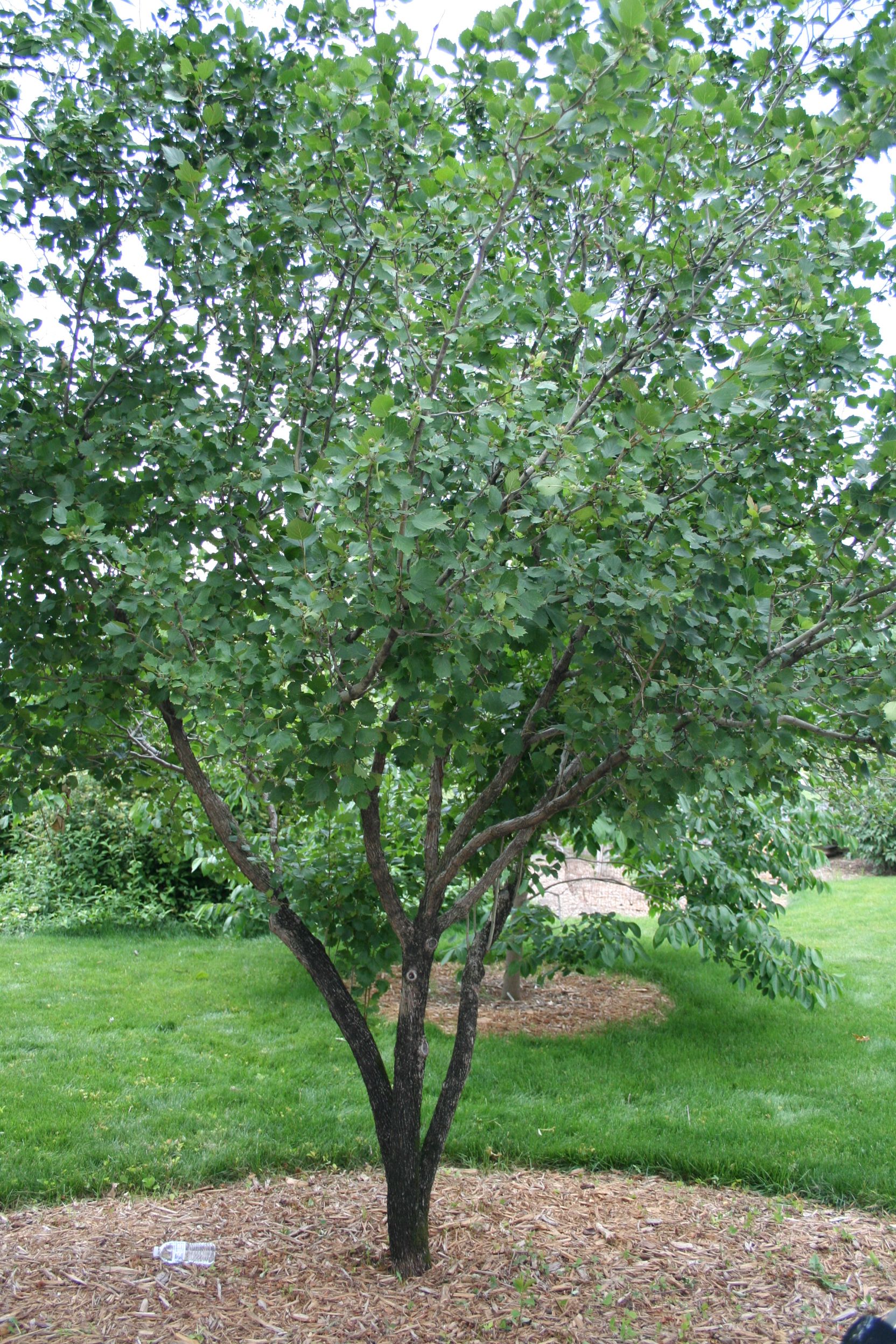Hawthorn, Downy
Crataegus mollis, Deciduous
Native to the Midwest including eastern Nebraska and Kansas, where it can be found in the savanna understory and prairie edges.

Where To Grow
Downy hawthorn is tough and easy to grow. The tree is quite adaptable to a wide range of soil types and growing conditions and is very drought tolerant when established.
Size at Maturity
| Tree Height | Tree Spread |
| 15-30' | 10-25' |
Tree Characteristics
Sometimes called red haw, the tree is low-branching, wide spreading and rounded reaching up to 20’ tall and wide.
Wildlife Benefits
Hawthorns are especially important trees for wildlife as their fruit is eaten by many birds, and their tangle of thorny branches often provides good cover to birds seeking shelter.
Additional Considerations
The double serrated leaves are often afflicted with various blights, scabs, and rusts which can cause their defoliation by mid to late summer. This defoliation is thought to be harmless to the tree and actually helps reveal the ornamental red fruits in late season.
Interesting Facts
Great examples exist across the region, including several nice specimens on the grounds of the Wyoming State Capitol in Cheyenne and at the nearby High Plains Arboretum, which attests to this tree's adaptability.

